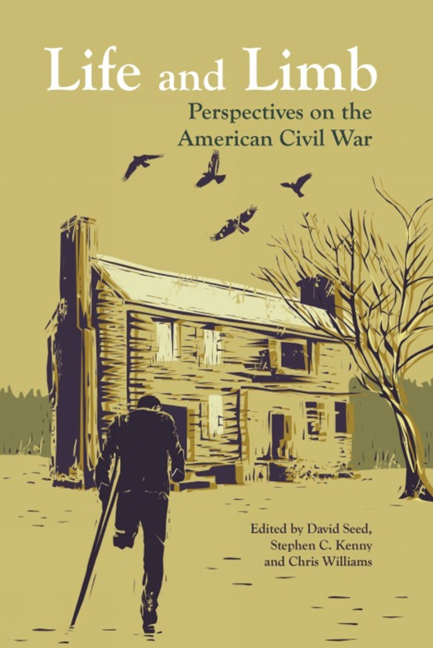Book contents
- Frontmatter
- Contents
- List of Illustrations
- Acknowledgements
- Introduction: Civil War Voices and Views
- MEDICAL AND SURGICAL MEMOIRS
- ACCOUNTS OF NURSING
- MEDICAL FACILITIES AND PATHOLOGY
- PHOTOGRAPHY
- AMPUTATIONS AND PROSTHETIC LIMBS
- ‘The Invalid Corps’ (song)
- The Case of Napoleon Perkins
- The First Amputee: ‘Record of Services’
- Testimonial Letter
- The Salem Leg (brochure)
- Testimony of Wearers (The Salem Leg: Under the Patronage of the United States Government for the Use of the Army and the Navy)
- The Human Wheel: ‘The Human Wheel, Its Spokes and Felloes’
- ‘The Case of George Dedlow’
- ‘Phantom Limbs’
- IN THE FIELD OF BATTLE
- POST-WAR NARRATIVES
- Contributors
- Select Bibliography
- Index
- Plates
Testimony of Wearers (The Salem Leg: Under the Patronage of the United States Government for the Use of the Army and the Navy)
from AMPUTATIONS AND PROSTHETIC LIMBS
- Frontmatter
- Contents
- List of Illustrations
- Acknowledgements
- Introduction: Civil War Voices and Views
- MEDICAL AND SURGICAL MEMOIRS
- ACCOUNTS OF NURSING
- MEDICAL FACILITIES AND PATHOLOGY
- PHOTOGRAPHY
- AMPUTATIONS AND PROSTHETIC LIMBS
- ‘The Invalid Corps’ (song)
- The Case of Napoleon Perkins
- The First Amputee: ‘Record of Services’
- Testimonial Letter
- The Salem Leg (brochure)
- Testimony of Wearers (The Salem Leg: Under the Patronage of the United States Government for the Use of the Army and the Navy)
- The Human Wheel: ‘The Human Wheel, Its Spokes and Felloes’
- ‘The Case of George Dedlow’
- ‘Phantom Limbs’
- IN THE FIELD OF BATTLE
- POST-WAR NARRATIVES
- Contributors
- Select Bibliography
- Index
- Plates
Summary
The following ‘cases’ are taken from ‘Testimony of Wearers’ in The Salem Leg. See also Guy R. Hasegawa, Mending Broken Soldiers: The Union and Confederate Programs to Supply Artificial Limbs (Carbondale, IL: Southern Illinois University Press, 2013).
Case B.
Thigh amputation. ‘Stands at work for eight hours a day, without trouble or inconvenience. Frequently walks a mile or two afterwards in the evening. Can walk four or five miles without pain or fatigue. Does not use a cane, feels almost as secure from falling or tripping as with the natural limb.’
Case C.
Leg amputation. Short and crooked stump. After two or three months’ experience in the use of the artificial leg, could walk twelve miles a day.
Case D.
Leg amputation. Tall and heavy person. Short stump. During the first summer after receiving the leg, mowed for six or seven days.
Case E.
Leg amputation. Heavy person. Short stump. Had worn wooden sockets several years, which were abandoned from the day of receiving the Salem Leg. Speaks of the relief as ‘thoroughly enjoyable.’ Describes the suffering caused by the wooden socket and the band of leather around the thigh as ‘agony’ and ‘torture.’
- Type
- Chapter
- Information
- Life and LimbPerspectives on the American Civil War, pp. 127Publisher: Liverpool University PressPrint publication year: 2015

